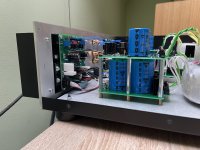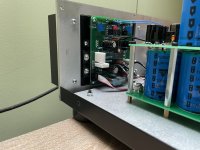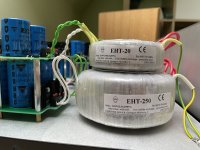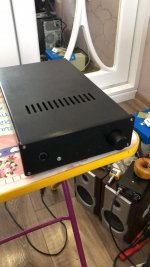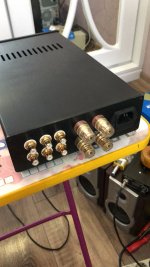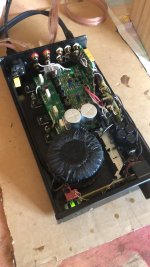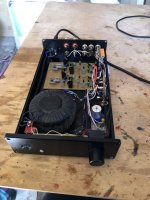Hi!
Although I have been reading in this website for years, I finally joined and this is my first post. Attached are pictures of my totally DIY preamplifier (BEG PA-2), circa 2006, which is still in use.
Bruce Gillingham




Although I have been reading in this website for years, I finally joined and this is my first post. Attached are pictures of my totally DIY preamplifier (BEG PA-2), circa 2006, which is still in use.
Bruce Gillingham
Wow, one of the best one I`ve seen here..Hi!
Although I have been reading in this website for years, I finally joined and this is my first post. Attached are pictures of my totally DIY preamplifier (BEG PA-2), circa 2006, which is still in use.
Bruce Gillingham
View attachment 1069413View attachment 1069414View attachment 1069415View attachment 1069416
Thanks for the very nice comments and "likes"! I started playing with audio and tube amplifiers while in high school and got serious with solid state in the late 70's. I have been designing, building, and using my own preamps and amps ever since. I am now a retired electrical engineer with more time, but, perhaps, poorer vision and hand dexterity 🙂. Retirement and the pandemic afforded me the time to complete my first monoblock power amp pair, now installed in my system!
The monoblocks are not as photogenic as the preamp and I have not yet taken the time to set up a background and strobes (photography is another hobby), but here are a couple of cell phone snaps:Please show us photos of that monoblock badboy! 🙂
The pair of MB1s mounted to the custom oak stands that I made (yet another hobby 🙂):
MB1 with the top cover removed:
Wow, another masterpiece. What is power and topology? You should start some threads on these amps.
You are too kind, xrk971! I rate the power as 150 W into 8 ohms, 300 W into 4 ohms, and 400 W into 2 ohms with distortion less than 0.006% over the full 20 Hz to 20 kHz band. The overall architecture is that of an instrumentation amplifier. The topology of the main difference amplifier is very similar to that of a Bob Cordell design but all bipolar. I think my main contribution to the amp's uniqueness is its precision bias control system. I plan to start threads on the "bias controller" and the full amplifier after I get out of newbie probation 🙂. The writeup on the former is ready to post; the writeup on the latter is in progress.Wow, another masterpiece. What is power and topology? You should start some threads on these amps.
Thank you, but far from perfect. If it makes you more comfortable, it takes me several, sometimes many, years to conceive, design, build, and test my amplifier projects.Too perfect, makes me uncomfortable.
Does the heat spread out OK on the heatsink with the output transistors so close together? Just curious.The latest version of my amplifier.
The baseplate of the heatsink is 10mm thick, and i feel no temperature difference over the heatsink. I put the output devices as close as possible, to reduce the lenght of the high current pcb traces.
Looks neat but too bad you had to carve out big chunks of the thick aluminum back plate which could have improved heat dissipation.The latest version of my amplifier.
Maybe yes, but i feel, that mounting directly to the heatsink is the better solution. The heatsinks have some small curve on the back side (0.2-0.4mm) so it is not esay to properly squeez them together.Looks neat but too bad you had to carve out big chunks of the thick aluminum back plate which could have improved heat dissipation.
Sweet, love it! You don't have any issues using just the case for main heatsink?
How about having the xformer so close? Is it shielded?
Anyway, nice compact build, congrats!
How about having the xformer so close? Is it shielded?
Anyway, nice compact build, congrats!
Amp working in class B and not hot 🙂Sweet, love it! You don't have any issues using just the case for main heatsink?
No need thisHow about having the xformer so close?
Transformer not have noise and have wire ground inside
ThanksIs it shielded?
Anyway, nice compact build, congrats!
Next step replacement Chinese green boards on the DIY NAP boards. This process is not ending 🙂)
Photo in attachment
Attachments
Simply incredible. Its actually better than a lot of commercial products out there.The monoblocks are not as photogenic as the preamp and I have not yet taken the time to set up a background and strobes (photography is another hobby), but here are a couple of cell phone snaps:
The pair of MB1s mounted to the custom oak stands that I made (yet another hobby 🙂):
View attachment 1069701
MB1 with the top cover removed:
View attachment 1069702
I love how economically youve achieved a shielding effect for the trafo
- Home
- Amplifiers
- Solid State
- Post your Solid State pics here

